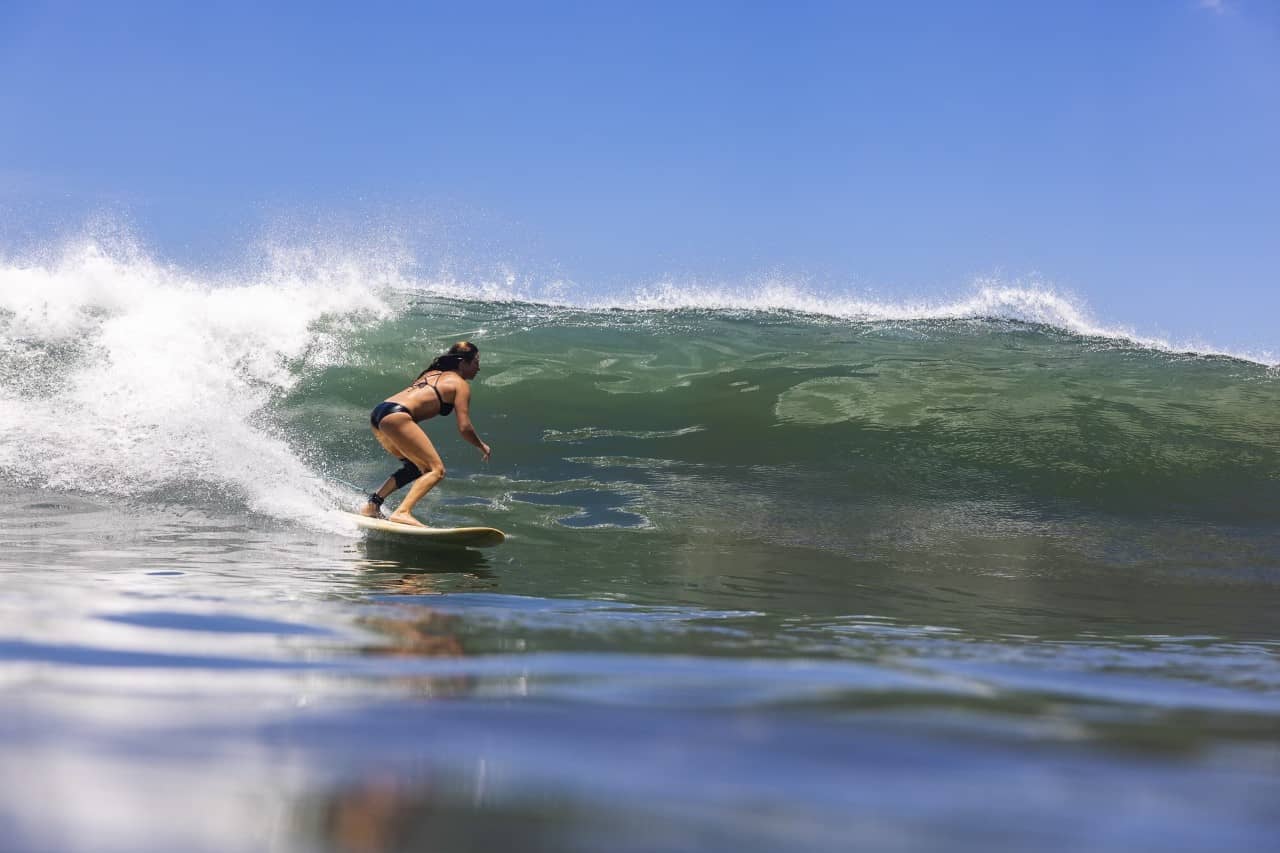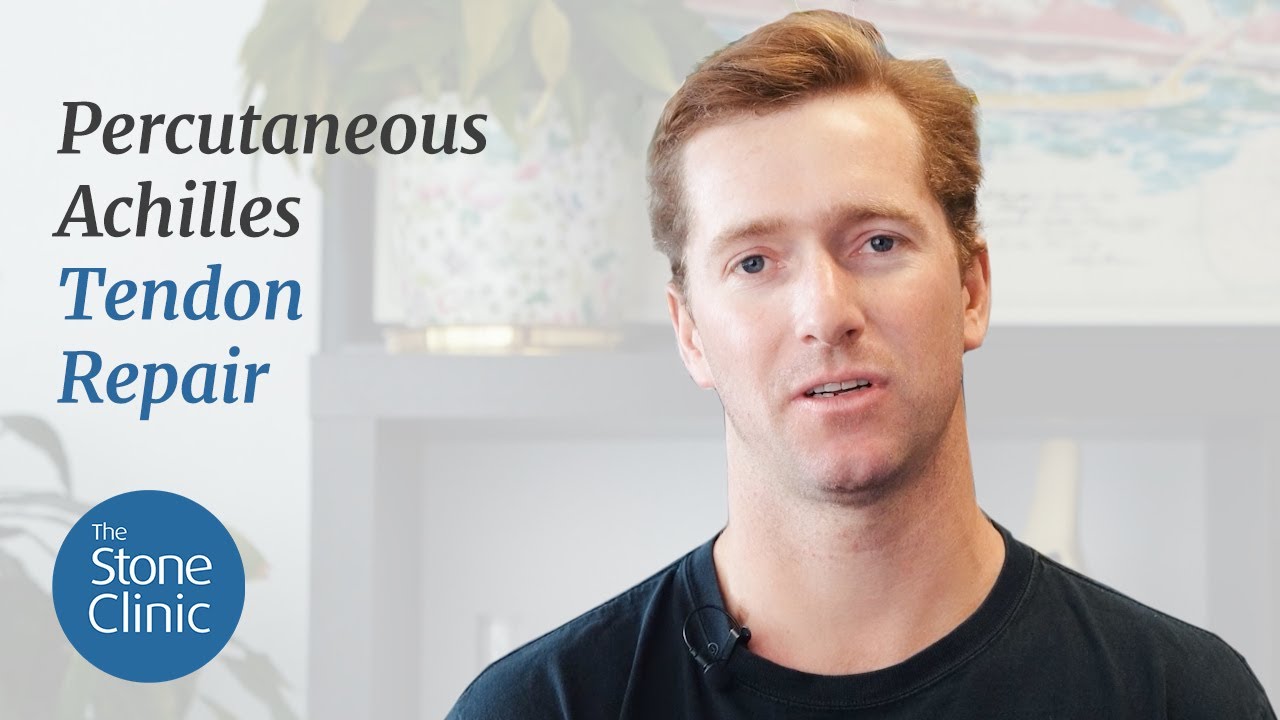How to Surf Forever
Hear From Our Patients
Surfers Returns from Ruptured Achilles with Percutaneous RepairCalifornia is a destination for surfers from all over the world. From Malibu to Mavericks, the west coast offers dozens of great spots to put in and ride. Though the overall risk of injury for surfers is low, each injury has the potential to ruin a great season. In this interview with journalist Jeff Greenwald, Dr. Kevin R. Stone discusses the dangers surfers face while catching and riding waves.

Jennifer Stone, MD surfing 4 months post ACL and MCL reconstruction with lateral meniscus repair.
Working in California, you must see a lot of patients who surf. Which muscles and joints work the hardest during surfing?
Dr. Stone: They all do, starting down low. You need ankle flexion and you need knee, hip, back, and shoulder flexion. You also need good angulation of your knee—especially for the back leg. That’s the section of your board that really determines your control. And then you have your hip flexors. You need to be able to flex your hips, drop your knees, and get low in order to drive a surfboard. You also want to be stable through your back and your core muscles. While paddling out, it's all about the shoulder, upper back, and thoracic spine. This is because you need spine and neck flexibility to bring your head up in order to let the shoulders windmill when you paddle.
So, what kinds of injuries do you generally see?
Dr. Stone: It is quite a broad range of injuries. For instance, some of our surfers come in with shoulder dislocations. Those aren't usually from surfing itself, but from falling and getting tumbled in the waves. Surfers who paddle a lot present with shoulder impingement or inflammation on their rotator cuffs. Or with low back injuries from getting tweaked in a fall. Others twist their knees and come in with torn menisci. Occasionally, we will get an ankle fracture or two. Unlike with skiing, however, we very rarely see ACL injuries.
Which of the injuries you mentioned must be repaired quickly to avoid long-term issues?
Dr. Stone: There are two especially urgent ones. Shoulder dislocations can put the surfer's life at risk— because if the shoulder dislocates in turbulent waves, the surfer can drown. As a result, we almost always repair dislocated shoulders right away. As for the torn meniscus cartilages, we're quite biased towards repairing them as soon as possible. This is so that the surfer, or any injured patient, doesn't develop arthritis.
Are there specific surgeries that can impact one’s ability to surf?
Dr. Stone: Anything that limits a joint motion will limit their future ability to surf. So a stiff shoulder, a stiff knee, or a stiff ankle, will limit their ability to perform on the board. That’s why if you are having a surgical procedure it must be followed by immediate rehabilitation, with a real focus on regaining full range of motion. Fortunately, many injuries can be treated without surgery and now often with a combination of anabolic injections (growth factors) and rehabilitation exercises.
Let's say a surfer is injured, and surgery is recommended. How can they assess this recommendation, and make sure that their surfing career isn't cut short by an ill-advised procedure?
Dr. Stone: That's a big question. Our bias at The Stone Clinic is to repair and regenerate and replace tissues rather than remove them. And, in general, that applies to almost all the injuries we see. If you want to surf until age 100, you need all your tissues.
What kind of post-op care will get surfers quickly and safely back onto the water?
Dr. Stone: Immediate physical therapy with an immediate focus on range of motion. We've learned mobility is more important than strength especially, in the early rehab phase.
There are, of course, other kinds of surfing–paddle surfing and kite surfing, for example. Are there injuries specific to those sports?
Dr. Stone: Yes. In paddle surfing, we see far more shoulder injuries than we do in prone surfing. In kite surfing—as in all the foiling sports—we see much more high-energy impact injuries. That’s because the speeds are so much higher, and there's foiling and jumping and other tricks that can be pretty dangerous, especially when you fall. So it's a totally different set of injuries in general. It is their love and our love of the outdoors and watersports that link them all together.
What steps can surfers take to avoid injury and surf for the rest of their lives?
Dr. Stone: Most injuries are mental errors, where somebody was elsewhere in their mind; they weren't in the game, they did something stupid, they took a risk they didn’t need to take. So having your mind in the game, and staying focused, is the most important part of injury avoidance.

